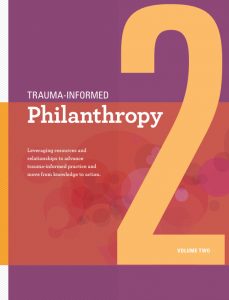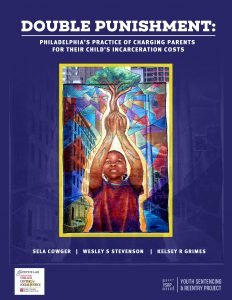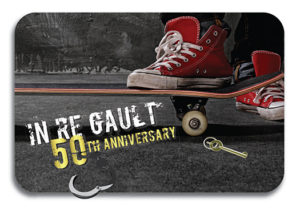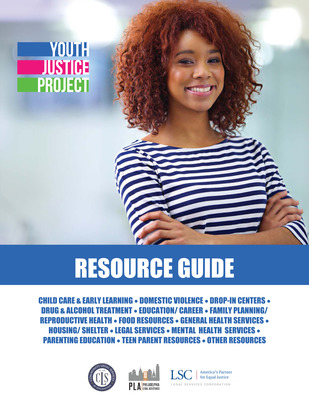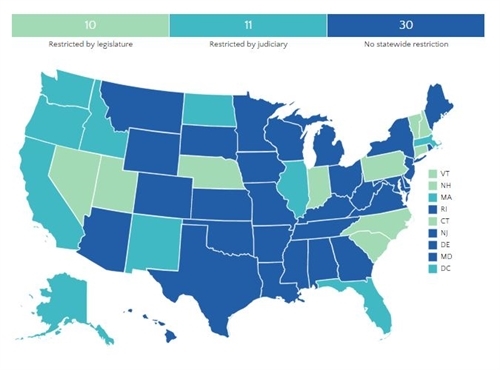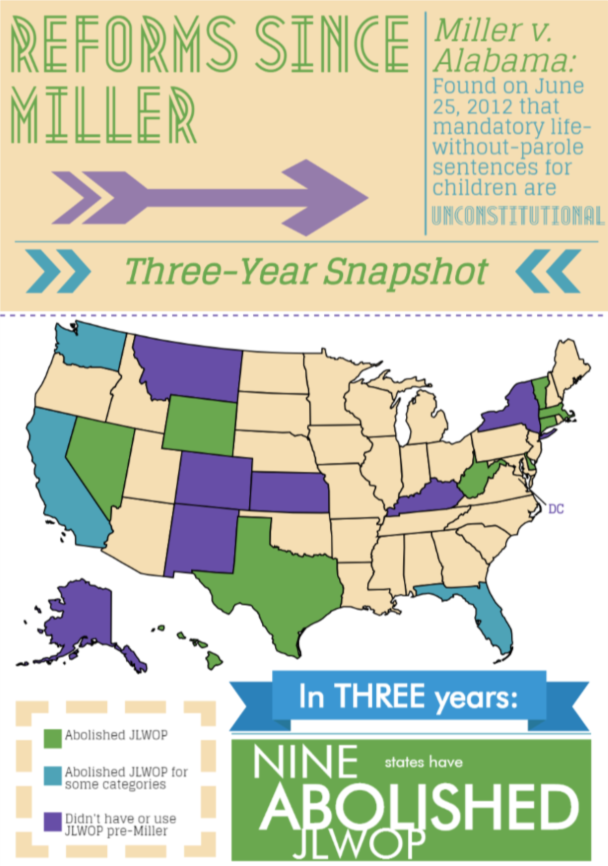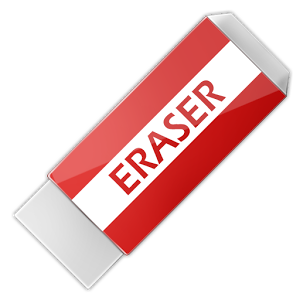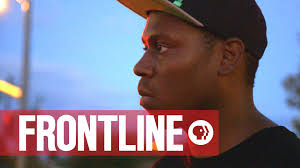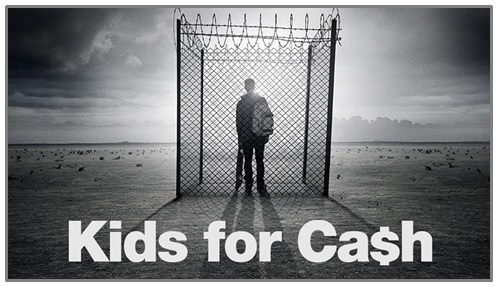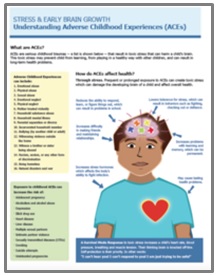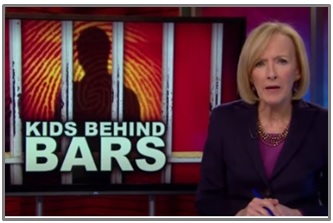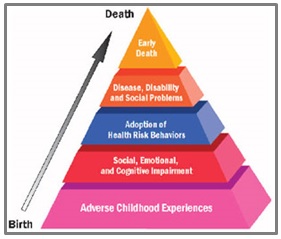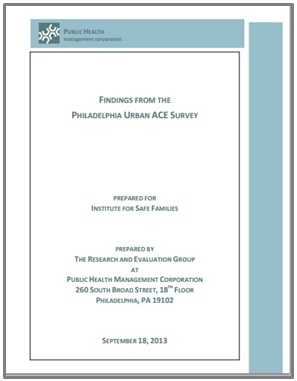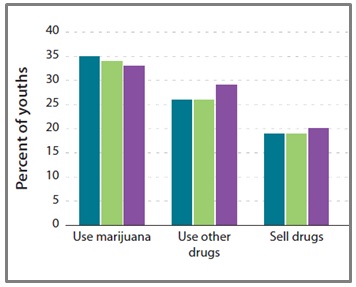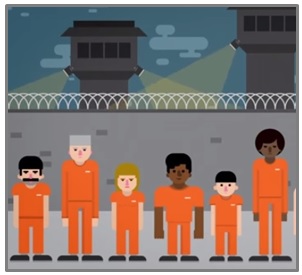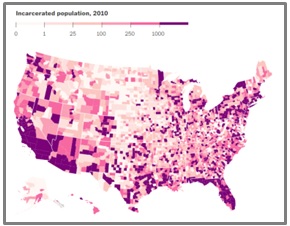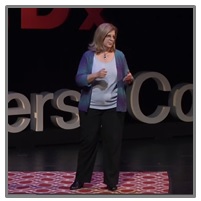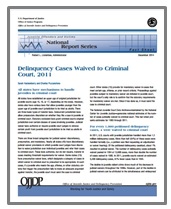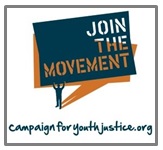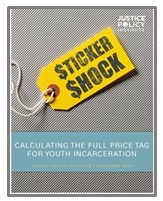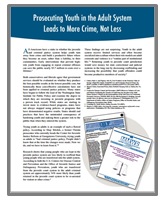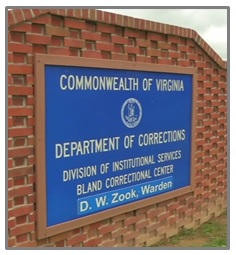Trauma-Informed Philanthropy, Volume Two
YSRP was featured in a new publication, “Trauma-Informed Philanthropy, Volume Two,” which was created by the Philanthropy Network of Greater Philadelphia, the Thomas Scattergood Behavioral Health Foundation, and the United Way of Greater Philadelphia and Southern New Jersey. YSRP is one of the five organizations profiled for our trauma-informed change efforts in Philadelphia. Also included in the report are key learnings about cross-sector collaborative networks and the role of philanthropy as a change agent. Read the report here.
dsgds
sdg
Double Punishment: Philadelphia’s Practice of Charging Parents for their Child’s Incarceration Costs
In earlier newsletters, we have shared a bit about the costs and fees work we are doing with the Justice Lab at Temple Law, to try to end the practice here in Philadelphia of charging parents for the cost of their children’s incarceration in the juvenile justice system. This practice occurred in Philadelphia since the 1990s, with little oversight, and a problematic fee structure paid to a private attorney. Thanks to the Justice Lab’s work, in conjunction with YSRP, Philadelphia’s Department of Human Services ended the practice. No additional parents will be subject to these costs. The Justice Lab, in conjunction with YSRP, wrote a report about the issue, and our work together. Read the report here.
dsgds
sdg
Miller, Montgomery, and Mitigation: Incorporating Life History Investigations and Reentry Planning into Effective Representation for ‘Juvenile Lifers’
YSRP Co-Directors Joanna Visser Adjoian and Lauren Fine, along with our close partner Dana Cook of the Atlantic Center for Capital Representation, marked the 50th anniversary of the historic U.S. Supreme Court decision In Re: Gault, which guaranteed the right of children to legal representation among other rights, with an article written for the April 2017 issue of the National Association of Criminal Defense Lawyers (NACDL)’s renowned journal The Champion. The article, entitled Miller, Montgomery and Mitigation: Incorporating Life History Investigations and Reentry Planning into Effective Representation for ‘Juvenile Lifers,’ offers insight into the particular role that YSRP and ACCR are playing in preparing for the resentencing hearings and Parole Board hearings for the more than 300 men and women from Philadelphia who were sentenced to life in prison without the possibility of parole when they were children. In it, the components of mitigation reports and reentry plans that we develop alongside our juvenile lifer partners are detailed for an audience eager to incorporate such tools and techniques into their representation and advocacy. Read the article here.
dsgds
sdg
Juvenile Life Without Parole – Making the Case for Release
Watch this webcast, featuring YSRP’s own Co-Director, Joanna Visser Adjoian, and our partner organization, the Atlantic Center for Capital Representation (ACCR)’s Deputy Director, Dana Cook, for an overview of how to conduct a comprehensive mitigation investigation in juvenile life without parole cases in preparation for a resentencing hearing. The webcast covers the nuts and bolts of the investigation, as well as a detailed overview of another critical component of this process, which is developing a realistic and reliable reentry plan. Watch the webcast here.
dsgds
sdg
Fair Punishment Project at Harvard Law – Legal Brief on how “Irreparable Corruption” must be shown before JLWOP imposed
To promote a proportionate, fair and accountable justice system, the Fair Punishment Project provides concise issue briefs on important doctrinal questions that are developing in state and federal courts. The attached brief relates to JLWOP and whether irreparable corruption reflects a substantive standard. Read the brief here.
dsgds
sdg
Who’s a Kid? Science – and law enforcement – are rethinking young adults.
The Marshall Project explores the influences of science on how we treat young people in the justice system. It asks us to “Consider three young people: An 18-year old who can vote, but can’t legally buy a beer; a 21-year old who can drink, but is charged extra to rent a car; and a 25-year old who can rent a car at the typical rate, but remains eligible for his parents’ health insurance. Which one is an adult? All of them? None of them? Some of them? Or does it depend on the individual?”
In Pennsylvania, even children under 10 can be prosecuted as adults for certain crimes. This article explores how research is being incorporated into the justice system to challenge these types of practices.
Read more here.
dsgds
sdg
Kids in Prison: Racial Disparities, Longer Sentences and a Better Way
WNYC, with support from the Solutions Journalism Network, has created a series of stories that show how getting tried as an adult depends on skin color. With a particular focus on New Jersey, the series addresses racial disparities, as well as explores models for reform. Listen and learn here.
dsg
sgd
Pennsylvania Laws that Allow Kids to be Tried as Adults
The Department of Justice Office of Juvenile Justice and Delinquency Prevention (OJJDP) created a State-by-State summary of transfer laws that authoirze or require kids to be proesecuted in the adult criminal justice system. For more information on that summary overall, or for links to other states, see this page. To learn more about the statutes in Pennsylvania specifically that allow this practice, see this page.
dg
dsg
Youth Justice Project (YJP) Provides Resources & Fact Sheets, Including on Kids in Adult Court
In response to the unique challenges that youth in Philadelphia face every day, Community Legal Services (CLS) and Philadelphia Legal Assistance (PLA) have launched the Youth Justice Project (YJP). Using a holistic and collaborative model, YJP seeks to transform the way legal services are provided to low-income and vulnerable youth ages 16-24 who face challenges including unemployment, teen parenting, mental and physical health, arrest, incarceration and poverty. YJP’s website provides access to a report, resource guide and specific fact sheets (including one created by YSRP) on legal topics that affect youth.
dg
dsg
JJGPS Tracks Juvenile Justice System Reform, Including Transfer to Adult Court
Juvenile Justice GPS (Geography, Policy Practice & Statistics) is an online repository providing visitors with a sweeping view of the juvenile justice landscape across states and a place to make comparisons and chart change. Of particular relevance to YSRP’s work, JJGPS charts the basic age and jurisdictional boundaries each state establishes for juvenile justice and transfer to criminal court, and tracks transfer trends across states.
dg
dsg
Legislative Reforms since Miller v. Alabama
On June 25, 2012, the United States Supreme Court found that mandatory life without parole sentences for children are unconstitutional. Since then, nine states have abolished juvenile life without parole (JLWOP), and another three states have abolished JLWOP for some types of offenses. This infographic shows where reforms have happened and what model post-Miller legislation looks like, highlighting recently enacted laws in West Virginia and Delaware.
dg
dsg
Have a juvenile record in Philadelphia? See if you qualify to have it expunged (for free)
Juvenile records do not disappear when you turn 18, and having a juvenile record can affect your ability to get a job or go to college. If your record is expunged, or completely destroyed, that means no one can see it, and therefore it can’t be held against you. This website can help you figure out if you are eligible to have your record expunged. If you’re found to be eligible, you can fill out a form that will connect you directly with a public defender in Philadelphia who can help you begin the expungement process.
dg
dsg
Trial Defense Guidelines: Representing a Child Client Facing a Possible Life Sentence
YSRP is proud to have contributed to the creation of the first-ever guidelines for representing children who face our country’s harshest penalty, “Trial Defense Guidelines: Representing a Child Client Facing a Possible Life Sentence.” Congratulations to our partners at the Campaign for the Fair Sentencing of Youth for their leadership on this effort, and the release of this important resource.
dg
dsg
Prosecuting Youth as Adults Fails to Address Trauma
This article article underscores the importance of YSRP’s work with young people facing charges in adult court. Nisha Ajmani describes that “[T]he adult system’s purpose is punishment, often employing flawed and inhumane practices and modes of thinking that are not rehabilitative and do not improve public safety. Additionally, when youth are sent to adult court, they are deemed irredeemable—frequently based only on the crime they are alleged to have committed, often barring them from receiving the help that so many of them desperately need, like individualized education and family therapy.” YSRP firmly believes in the importance of the law being informed by science, and in addressing the underlying issues that children face, instead of punishing them in a way that will exacerbate them.
dg
dsg
A Second Chance: Education’s Role in Reversing Mass Incarceration
This article in the Atlantic focuses on the importance of planning for reentry as early as possible and describes “Why it’s important to lift formerly incarcerated black men out of the crime cycle.” The author, Irvin Weathersby Jr., a college professor in New York, urges that “Nowhere is it written in statute or discussed in a court of law that the lifelong, extrajudicial punishment for crime should be the forfeiture of one’s humanity. If these men can’t gain employment, education, or enfranchisement, many times because of a mistake made in their youth, the damage is not singular; the collateral impact threatens an entire race and the ideals of America.”
dg
dsg
FIVE THINGS to know about Youth Not Employed or in School
As recently as 2012, there were approximately 6.7 million youth in the United States who were not enrolled in school and who had been disconnected from the workforce for at least six months. That represents about 17 percent of the 16-to-24 age group nationally. Sometimes referred to as “opportunity youth” or “disconnected youth,” this population is among the hardest to reach with traditional social interventions. Yet, there is an emerging body of practice and literature that suggests these young people can be successfully reconnected to meaningful opportunities.
dg
dsg
This short film tells the story of Alonza Thomas — sent to adult prison in California at the age of 16 — and how spending more than a decade behind bars impacted him and his family.
dg
dsg
This film reveals the true story behind the notorious “kids-for-cash” case in Lucerne County, PA, which was uncovered by our partner organization, Juvenile Law Center, in 2007. Raising issues about justice, class, and the juvenile justice system, this film is a shocking wake-up call about how kids are treated in this country. [Directed by Robert May, 2014]
dg
dsg
Handouts for parents about ACE, toxic stress & resilience
ACEs are serious childhood traumas that result in toxic stress that can harm a child’s brain. This toxic stress may prevent a child from learning, from playing in a healthy way with other children, and can result in long-term health problems. Frequent or prolonged exposure to ACEs can create toxic stress which can damage the developing brain of a child and affect overall health. [ACES Connection, Val Krist, February 5th, 2014]
dg
dsg
Why keeping young people out of jail could reduce crime
PBS NewsHour – Youth who are kept under supervision close to home, rather than in locked state detention, are less likely to be arrested again or commit more serious crimes. [ACES Connection, Elizabeth Prewitt, January 29, 2015]
dg
dsg
The Adverse Childhood Experiences (ACE) Study
The Adverse Childhood Experiences (ACE) Study is one of the largest investigations ever conducted to assess associations between childhood maltreatment and later-life health and well-being. Its findings suggest that certain experiences are major risk factors for the leading causes of illness and death as well as poor quality of life in the United States. It is critical to understand how some of the worst health and social problems in our nation can arise as a consequence of adverse childhood experiences. [Centers for Disease Control and Prevention & Kaiser Permanente’s Health Appraisal Clinic in San Diego, 1995-1997]
dg
dsg
The Philadelphia Urban ACES Study
The study, which was funded by the Robert Wood Johnson Foundation and conducted by Public Health Management Corporation (PHMC) for the Institute for Safe Families and the ACE Task Force, collected data from Philadelphians regarding adversity that they faced. The questions developed for this survey expanded on the original questions from the ACE Study done in 1995. These new questions were the first extensive survey of this kind specifically in an urban setting. [Institute for Safe Families Imagining a Better Future, The Research and Evaluation Group, Public Health Management Corporation September 18th 2013]
dg
dsg
Study links income to violent and property crimes committed by youth
“Low-income youths are more likely to engage in violent and property crimes than are youths from middle- and high income families. In particular, low-income youths are significantly more likely to attack someone or get into a fight, join a gang, or steal something worth more than $50.” To see the full map of Adolescent Risk Behaviors by Income Level, Fact #4 here. [The Hamilton Project, Melissa S. Kearney, Benjamin H. Harris]
dg
dsg
Mass Incarceration in the US [YouTube]
America’s 40-year policy of mass incarceration is deeply unethical, not very effective, and promotes the security of the few at the expense of the many. The non-profit, non-partisan Prison Policy Initiative produces cutting edge research to expose the broader harm of mass criminalization, and then sparks advocacy campaigns to create a more just society. [YouTube, Visually; kurzgesagt; The Prison Policy Initiative]
dg
dsg
The U.S. has more jails than colleges. Here’s a map of where those prisoners live.
“At any given time, hundreds of thousands of individuals are locked up in the nation’s 3,200 local and county jails. Every where you look in the U.S. Nearly 85 percent of U.S. counties are home to some number of incarcerated individuals. Localities spend tens of thousands of dollars per prisoner each year.” [The Washington Post, Christopher Ingraham]
dg
dsg
Kids in Cages | Michele Deitch | TEDxAmherstCollege [YouTube]
This talk was given at a local TEDx event, produced independently of the TED Conferences. Michele Deitch, an expert on prison reform and juvenile justice and an award-winning teacher at the University of Texas, addresses the problem of youth who are prosecuted in the adult criminal justice system and confined in adult jails and prisons. She describes the troubling conditions she has witnessed, and discusses the kids she has encountered in the course of her work who have persuaded her about the need to change the laws and policies that permit this practice. [TEDx, Michele Deitch]
dg
dsg
Delinquency Cases Waived to Criminal Court, 2011
All states have established an upper age of original jurisdiction for juvenile courts (age 15, 16, or 17, depending on the state). However, states also have various laws that allow juveniles younger than the upper age of juvenile court jurisdiction to be tried as adults. There are three basic types of transfer laws, concurrent jurisdiction, statutory exclusion laws, and judicial waiver laws. [U.S. Department of Justice, Sarah Hockenberry and Charles Puzzanchera]
dg
dsg
Campaign for Youth Justice [Resource Page]
The Campaign for Youth Justice is committed to providing you with the most updated information on transfer/waiver of youth to the adult criminal court and has produced several publications including National Reports and Policy Briefs. The national reports and documents linked here highlight the vast body of evidence finding that transferring juveniles to the adult criminal justice system leads to higher rates of recidivism, puts incarcerated and detained youth at unnecessary risk, has little deterrence value, and does not increase public safety. [Campaign for Youth Justice, Various]
dg
dsg
Scotus Blog: Toca v. Louisiana
After passing up the issue several times, the Supreme Court agreed today to consider whether its 2012 decision in Miller v. Alabama, limiting sentences of life without parole for minors who commit murder, applies retroactively — that is, to inmates whose conviction had become final before the ruling was issued. However, in taking on that issue, the Court also added a second question that might keep it from deciding the first one. The new case, Toca v. Louisiana, was one of four cases the Court accepted for review; the cases are likely to be argued in late March or early April. [Scotus Blog, Lyle Denniston]
dg
dsg
Campaign for the Fair Sentencing of Youth [Resource Page]
The Campaign for the Fair Sentencing of Youth’s vision is to help create a society that respects the dignity and human rights of children through a justice system that operates with consideration of the child’s age, provides youth with opportunities to return to community, and bars the imposition of life without parole for people under age 18. [Campaign for the Fair Sentencing of Youth, Various]
dg
dsg
Sticker Shock: Calculating the Full Price Tag for Youth Incarceration
Thirty-three U.S. states and jurisdictions spend $100,000 or more annually to incarcerate a young person, and continue to generate outcomes that result in even greater costs. Our new report, Sticker Shock: Calculating the Full Price Tag for Youth Incarceration, provides estimates of the overall costs resulting from the negative outcomes associated with incarceration. The report finds that these long-term consequences of incarcerating young people could cost taxpayers $8 billion to $21 billion each year. [Justice Policy Institute, Various]
dg
dsg
Prosecuting Youth in the Adult System Leads to More Crime, Not Less
All Americans have a stake in whether the juvenile and criminal justice system helps youth turn away from crime and build a productive future where they become an asset, rather than a liability, to their communities. Early interventions that prevent highrisk youth from engaging in repeat criminal offenses can save the public nearly $5.7 million in costs over a lifetime.1 [Campaignforyouthjustice.org, Various]
dg
dsg
The Center for Public Integrity traveled around the U.S. to investigate the growing web of prison bankers, private vendors and corrections agencies … and how they profit off the innocent by shifting costs onto inmates’ families. [Center for Public Integrity, Eleanor Bell with Daniel Wagner]
dg
dsg

